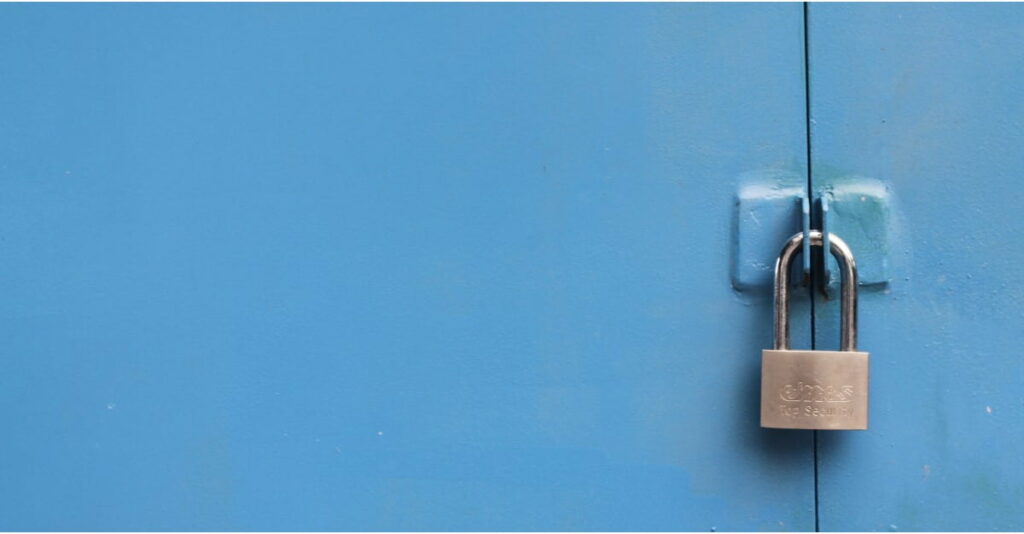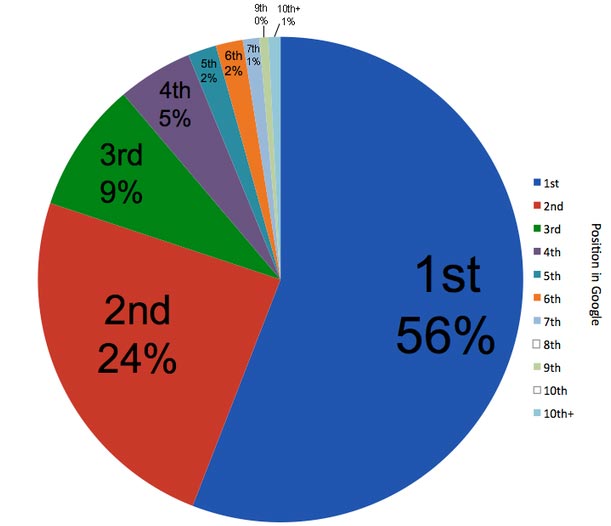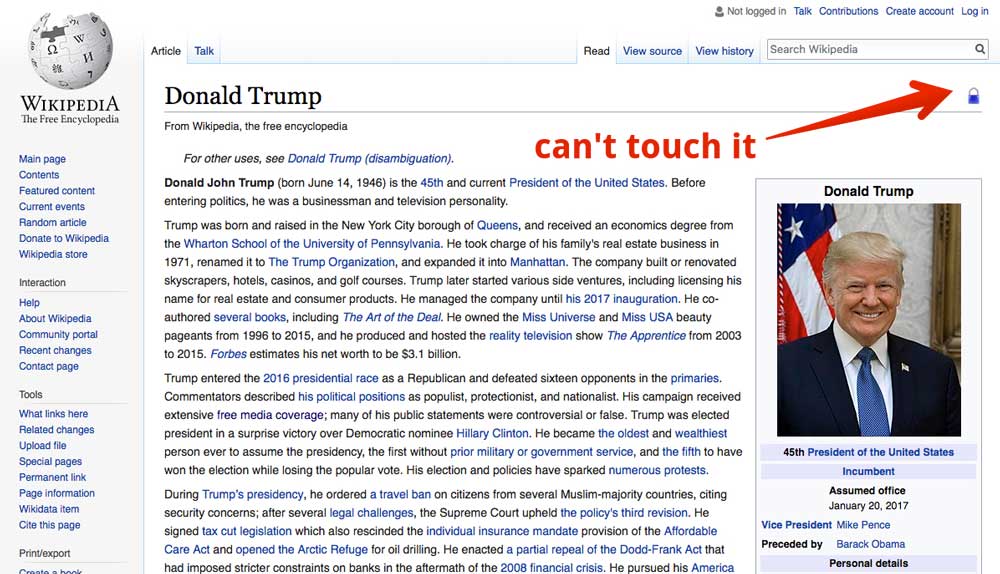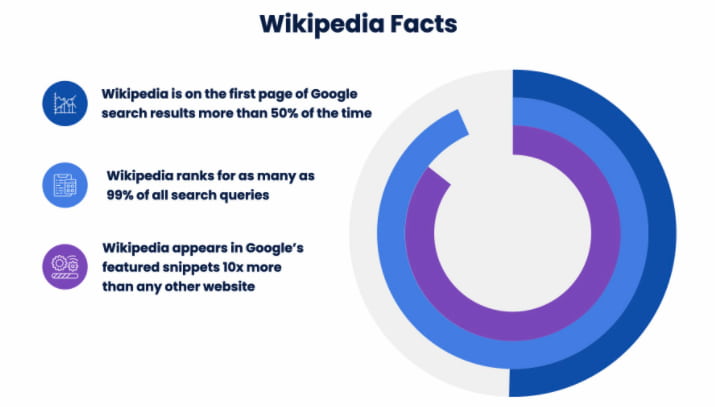All the Types of Wikipedia Article Protection Explained

Wikipedia shows up as the No. 1 search result on more than 56% of all Google searches and appears on page one of 99% of all searches. Some pages are more vulnerable to vandalism though. In that case, consider requesting some form of protection for the article.
Highlights:
- Some Wikipedia articles are prone to deliberate attacks of false information.
- To prevent fraudulent edits and vandalism, Wikipedia has various levels of article protection.
There are 11 types of Wikipedia article protection, created to protect different types of articles in specific ways.
Why is Wikipedia article protection important?
Not every Wikipedia article needs protection. But for the ones that do, it’s not just essential to have protection; it’s crucial to have the right type. Why is it so important, you ask? Well, having a Wikipedia article can boost your SEO efforts and is a critical part of your reputation management strategy. This is because Google recognizes Wikipedia as a source of valuable and relevant information and is very likely to put Wikipedia links atop its search engine results article (SERP) rankings.
In fact, one study states that Wikipedia links appear in the first article of 99% of all Google searches and are listed as the No. 1 search result in 56% of them.
Because anyone can edit Wikipedia articles that don’t have some level of protection, they have become popular forums for calling out individuals and corporations for their misdeeds and mistakes. An example is the star of The Bachelor Season 17, Arie Luyendyk, Jr., a race car driver turned reality star who made an unpopular pivot on the show’s season finale. Fans of the show barraged Luyendyk’s unprotected Wikipedia with an onslaught of criticisms before it received semi-protection, exhibiting that if you’re a notable figure in the middle of controversy, the internet trolls will find you.
In certain circumstances such as this, it is necessary to protect a Wikipedia article from being edited or modified by certain people. Typically, Wikipedia article protection coincides with a specific event that damages the subject matter of an article, and that cannot be mitigated or prevented through other avenues, such as a block.
Because Wikipedia is built on the principle of anyone being able to edit its articles, you must be proactive and request article protection if you want your article to be completely safe from vandalism.Wikipedia established its protection policy to screen those seeking article protection.
Wikipedia’s goal is to have as many of its articles as possible open for public editing, so you must advocate for your article’s protection if you believe you meet the criteria for one of the site’s 11 types of protection (discussed below).
If you or your business are notable enough to warrant a Wikipedia article, part of your reputation management game plan should include, first, figuring out what type of protection is warranted and then, requesting such protection from Wikipedia.Let’s take a look at the different types of Wikipedia article protection so you can make an informed decision.
What types of Wikipedia article protection are there?
If a Wikipedia article is unprotected, anyone can edit it. But article protection affects tens of thousands of articles in English Wikipedia alone. This renders some of Wikipedia’s most visited articles uneditable by most of its users. However, the degree of protection varies. Here are the different tiers of Wikipedia article protection:
Fully-protected

Interface protected

Template-protected

Semi-protected

A Wikipedia user’s account becomes auto-confirmed when it is at least four days old and has made at least 10 edits on Wikipedia.Because certain individuals with negative views toward a particular subject might try to open a Wikipedia account and quickly tarnish an article about the subject they disagree with, the online Encyclopedia likes to get to know users and their habits a bit before allowing them to edit semi-protected articles such as the article for “Islam.”
Create protected

Creation protection is pretty self-explanatory. Wikipedia administrators have the ability to prevent the creation of articles. This is particularly useful for popular “bad articles” that previously have been deleted but repeatedly get recreated.The online Encyclopedia uses a title blacklist to help identify new article titles that should be blocked. articles that are creation protected are also referred to as “salted” articles. If a contributor wants to create an article with appropriate content about a “salted” title, they can contact the protecting administrator.
Move protected

- An article is persistently the subject of article-move vandalism
- An article has an article-name dispute
- An article is so highly visible that it has no reason to be moved
All fully-protected articles are move protected.
Upload protected

Pending changes protected

Extended confirmed protected

As stated before, Wikipedia’s goal is to have as many of its users as possible able to edit its articles. However, the online Encyclopedia does like to reward those who use its site regularly and abide by its policies consistently.Wikipedia’s VIP users are referred to as “Extended Confirmed.” Extended confirmed protection is also known as 30/500 protection because users must be registered for at least 30 days and have a minimum of 500 edits to their name to be granted extended confirmed status.Sometimes an article doesn’t warrant full protection but semi-protection is not enough. This is a good example of when extended confirmed protection comes into play. This ensures that only Wikipedia’s most reliable users can edit some controversial articles, such as the Wikipedia article for former President of the United States Donald Trump.
Protected by Office

Cascade protected
Cascade protection is very technical but also very important. It is to protect transcluded items that are considered “ultra-high-use” and are crucial to the Wikipedia interface. Cascade protection is similar to interface protection, except it encompasses the protection of more elements of an article, such as templates, images, and other media hosted on the article.Some of these types of protections are more common and applicable than others. But here is a table that summarizes the tiers of Wikipedia article protection and the specs of what each protection entails.
Who should edit protected Wikipedia articles?
Just because you may be able to edit your own Wikipedia article once it’s protected doesn’t mean that you should. Even if your goal is to limit the number of people who can edit your company’s Wikipedia article to as few people as possible, you should allow some more objective voices other than you or your stakeholders to modify your Wikipedia article. This helps prevent conflicts of interest.
Wikipedia article protection FAQs
Why do some Wikipedia articles need protection?
In certain circumstances where a Wikipedia article is vulnerable to deliberate attacks or falsehoods, it is necessary to protect the article from being edited or modified by certain people. Typically, Wikipedia article protection coincides with a specific event that is damaging to the subject of an article that cannot be mitigated or prevented by other avenues such as a block.
What types of Wikipedia article protection are there?
There are currently 11 different types of Wikipedia article protection: Fully-protected; Interface protected; Template-protected; Semi-protected; Create protected; Move protected; Upload protected; Pending changed protected; Extended confirmed protected; Protected by Office; and Cascade protected.
Should you edit your own protected Wikipedia articles?
You should allow people that are more objective than you or your stakeholders to modify your Wikipedia article. This helps prevent conflict-of-interest editing. Many times, it requires the help of a reputation management company to obtain the objective voice needed for Wikipedia article edits.
Tags: Wikipedia, Wikipedia Writing.




